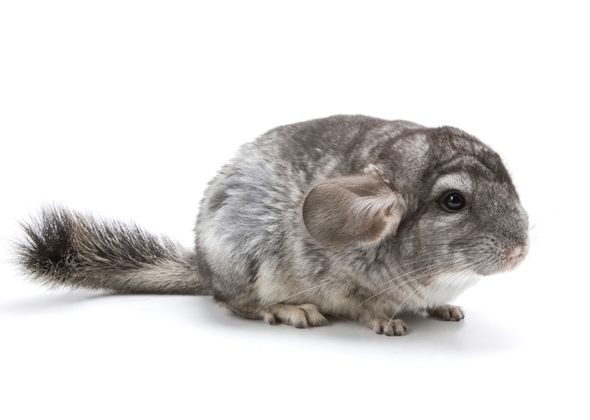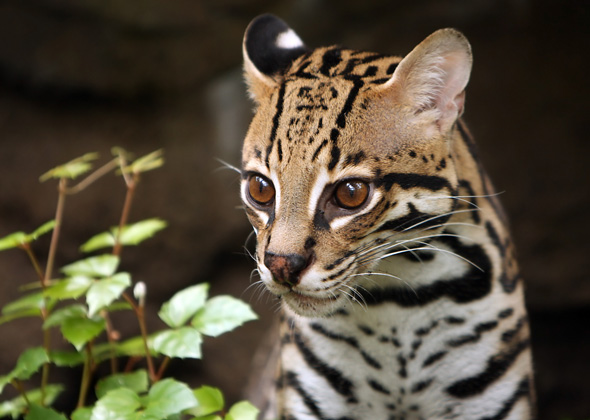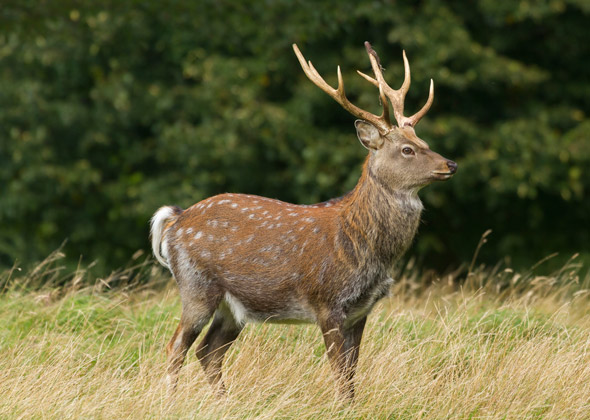20 Animals You Might Not Know Are Going Extinct
Published on March 12, 2013
Thousands of animal species are listed in the Endangered Species Act, but we found a few that you wouldn't expect to find on the brink of extinction. From household pets to garden pests, here are animals currently listed as endangered or threatened in the United States and around the world.

Mice
It seems strange to worry about the disappearance of animals many people consider pests. Nevertheless, dozens of mouse subspecies are going extinct around the world. For example, the Pacific pocket mouse is sitting on some of the most desirable coastal real estate in California. Fortunately, this little guy is protected by conservation regulations strong enough to deter developers from pursuing building projects in coastal lands worth millions of dollars, causing projects to be put on hold or completely shut down to insure the health and safety of its habitat.

Monkeys
Hunting and habitat loss are two reasons Spider monkeys in Central America are disappearing. Spider monkeys require large areas of forest for a healthy habitat and have been subject to population decline due to deforestation in areas of Costa Rica, Panama, El Salvador and Belize. Spider monkeys have a slow reproductive cycle and are no longer living in areas where they were commonly found in the early 1900s.

Wolves
Wolves, the largest cousin of the canine family, are a very important part of the cycle of life. North America's Gray wolves are what biologists call "keystone predators," meaning they are an essential element in their ecosystem. Gray wolves are hearty and highly adaptable, but due to poaching and habitat loss across America, their numbers have fallen alarmingly low.

Armadillos
Closely related to sloths and anteaters, armadillos are a unique species with around 20 different subspecies. One variety, the Giant armadillo, is close to extinction in their wild habitats of South America. Armadillos live in burrows they dig in the ground, so preservation of their habitat is essential to their continued health and quality of life. Overhunting and urbanization of habitat are causes of their decreased numbers to date.

Corals
Many people don't even think of corals as living creatures, but they are key to the survival of entire ecosystems. Elkhorn and Staghorn stony coral species are the first coral organisms to be added to the Endangered Species Act and are currently classified as "threatened." Staghorn coral, or Acropora cervicornis, has lost 80 to 90 percent of its reef populations around the world in the past few decades.

Horses
How is it possible that horses are endangered? Przewalski's horses, an equine subspecies found in Mongolia, were determined extinct in the wild in 1966. Scientists have been able to reintroduce the species to its native habitat in recent years, but the free-range population is only a little more than 300. The total number of Przewalski's horses in existence today is approximately 1,500.

Alligators
Residing in North American wetlands, the American Alligator is listed as a lower-risk endangered species. Conservation efforts have helped alligator populations rise in recent years, but they are still being hunted for skin and meat across the southeast.

Sheep
Despite their massive curling horns, Bighorn sheep aren't safe from extinction. One of the three sheep subspecies, the Sierra Nevada Bighorn sheep, is currently listed as endangered. In the early 1900s, as many as 2 million Bighorn sheep could be found in California and other regions of the U.S. Now fewer than 70,000 live in those areas.

Chinchillas
Chinchillas, the soft-furred rodents commonly found in pet stores, are disappearing in their natural habitats. Up to 90 percent of wild chinchillas have been lost in the past 20 years. Unfortunately, their pelts have been in high demand for decades. Being listed as an endangered species helped stop commercial trade of wild chinchilla fur, but they are still pursued by poachers in South America.

Hawks
The hawk is one of the most common birds found in North America, so it is shocking that any of its subspecies would be in danger of extinction. However, one subspecies, the Puerto Rican Broad-Winged hawk, is listed as endangered wherever it is found. Their numbers in their native habitat have been estimated as few as 100 birds.

Ferrets
The Black-Footed ferret is one of the most endangered animals in America. The Black-Footed ferret's diet consists almost entirely of prairie dogs, which unfortunately have decreased significantly in number since the early 1900s, when populations were targeted by farmers and land owners who viewed them as pests. By the 1970,s Black-Footed ferrets were assumed to be extinct in the wild, but in the 1980s a colony of ferrets was found in Wyoming and were heavily monitored. The later generations of the ferrets were captured and placed in a protective breeding program after plague and canine distemper killed the majority of their colony.

Zebras
Zebras may be a common sight in zoos around the U.S., but they are rapidly declining in their native habitats. A subspecies of zebra found in Africa, Grevy's zebra, was listed "threatened" in 1979. As the largest and wildest of the three zebra subspecies, Grevy's zebra populations are decreasing at an alarming rate due to habitat fragmentation and agricultural livestock overgrazing.

Cockatoos
Salmon-Crested cockatoos were listed as a threatened species in 2011 wherever they occur in the world. The Fish and Wildlife Service listed this subspecies of cockatoos in danger of extinction due to illegal logging and pet-trade trapping in areas of Indonesia.

Ocelots
Ocelots, twice the size of a domestic cat found in Central America and North America, are known for their beautiful dappled coat, which is coveted by hunters. Until 1996, Ocelots were on the whole listed as a threatened species, but were recently reranked as "least concern" by the 2008 IUCN Red List. One of the 11 subspecies is currently listed as endangered in North America.

Snakes
Garden-variety garter snakes are very common, but in California one subspecies has been listed as endangered since 1969. Pollution, urban development and pet-trade capture are thought to be causes of population decline over the past century.

Deer
Twenty-three subspecies of deer are listed as endangered and are disappearing from the world. Most notably, Key deer, found only in the Florida Keys, were almost completely eradicated by the mid-1900s. Their populations have increased to upward of 800 individuals in recent years, but more than 50 deer are killed by drivers every year, accounting for almost 70 percent of annual deaths.

Butterflies
Pesticides and urbanization are a couple reasons butterflies are becoming more scarce in North America. In fact, 27 types of butterflies are threatened or endangered in the world.

Snails
Just because the snail is able to carry his home on his back doesn't mean he's protected from extinction. There are over 80 snail subspecies listed as threatened or endangered through the U.S. Fish and Wildlife Service. Snails are in danger due to climate change, pollution and urban development.

Bats
Bulmer's Fruit Bats, found in New Guinea, are a critically endangered subspecies. Their populations were healthy in the 1970s when they were targeted by hunters. Within 10 years almost all Bulmer's Fruit Bats had been destroyed due to habitat destruction, and they were listed as critically endangered by 1984.

Macaws
Macaws can be big or small, but they comprise the world's largest parrots. Unfortunately, three macaw subspecies are in danger of extinction. Loss of habitat, hunting and illegal trapping are causing these macaw varieties — the Glaucous, Little Blue and Idigo — to disappear. Now, it is estimated that only 3,000 hyacinth macaws (pictured above) can be found in the wild.





